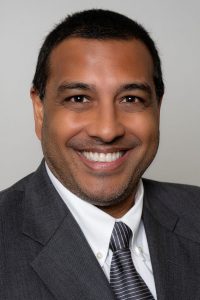Carly Gomes, MD, FAAP, is a Neonatologist at Stony Brook Medical Center. She serves as the Equity, Diversity and Inclusion Chair for New York Chapter 2
This year’s virtual American Academy of Pediatrics National Conference and Exhibition (NCE) featured perspectives of leading researchers and child health advocates on the adverse health and social/behavioral outcomes impacting non-white children and their families. Systemic racism in the United States influences social determinants of health and contributes to inequities in health among minority children. Although the clearest path towards improving the health outcomes of children of color would be to abolish racism, this is an overwhelming task to consider. How do you begin to dismantle systemic racism when it is so ingrained in societal norms? What can pediatricians do to elicit change and be advocates for minority children?
The AAP has taken the crucial first steps towards abolishing racism by formally identifying racism as an independent driver for health inequity in children and by apologizing for our organization’s own racist history. Although many other medical groups have released statements addressing racial health disparities, the AAP is among the few to publicly acknowledge past discriminatory practices and the harm these institutional actions caused.
Through this process of recognition and reconciliation, the AAP has established itself as an anti-racist organization dedicated to promoting the health and well-being of all children. As pediatricians and members of the AAP we can also do our part to establish ourselves as anti-racist health-care providers.
Below are 5 tips to get you started.
- Increase your exposure to different types of people and experiences. Surround yourself with diversity. This can be as simple as trying foods from different countries or learning about holiday traditions in other cultures. Take a critical look at your social media profiles and photos to see who your friends and acquaintances are. Though it’s comforting to associate with individuals with similar backgrounds and interests, challenge yourself to interact with someone very different from yourself.
- Self-reflect and identify your own biases. Unconscious biases can increase during periods of stress or when you feel time-pressured. Understanding your personal biases and being cognizant of times when these biases may become more pronounced is important in ensuring that they don’t significantly influence your thoughts and actions.
- Educate yourself. Consider adding Ibram X. Kendi’s book, “How to be an antiracist,” to your queue. Kendi served as the virtual NCE’s closing plenary speaker this year. Familiarize yourself with the AAP policy statement on the impact of racism on child and adolescent health and learn more about how all children are adversely affected by systemic racism.
- Create a home and working environment that embraces inclusivity. Set an expectation that racist commentary is unwelcome and encourage friends, family members, and colleagues to hold each other accountable for the use of racist or discriminatory dialogue.
- Advocate for change. Find an outlet where you can safely speak up against racial injustice. Make your voice and opinions heard by exercising your right to vote. Let us all do our part to elect anti-racist officials who are committed to decreasing health inequities in children. This year, more than ever, we need to vote like children’s futures depend on it.
References:
- https://pediatrics.aappublications.org/content/144/2/e20191765?ijkey=1ca3c621e5861f5570fe82e52ae36206d8e173e0&keytype2=tf_ipsecsha
- https://pediatrics.aappublications.org/content/146/3/e2020019794
- https://www.aappublications.org/news/2020/08/27/gotv090120


